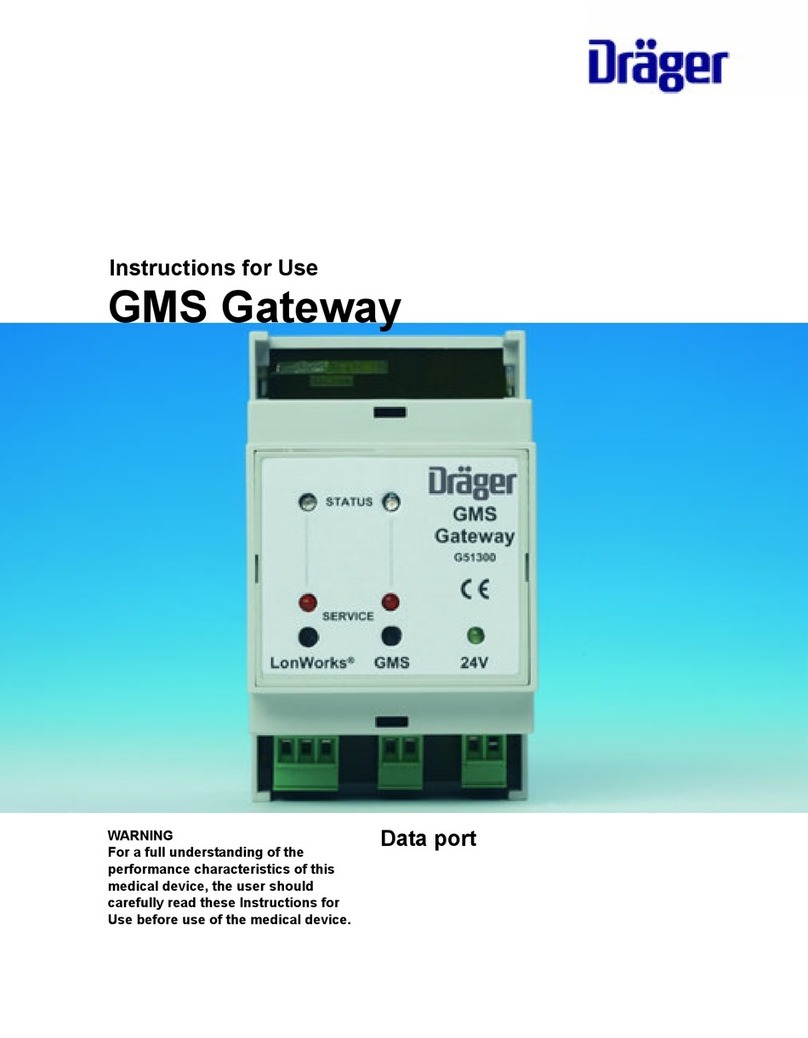
3
Zu Ihrer und Ihrer Patienten Sicherheit For Your Safety and that of Your Patients
Zu Ihrer und Ihrer Patienten
Sicherheit
Gebrauchsanweisung/Montageanweisung beachten
Jede Handhabung an der Anlage setzt die genaue Kenntnis
und Beachtung dieser Gebrauchsanweisung/Montageanwei-
sung voraus. Die Anlage ist nur für die beschriebene Verwen-
dung bestimmt.
Instandhaltung
Die Anlage muss halbjährlich Inspektionen und Wartungen
durch Fachleute unterzogen werden (mit Protokoll).
Instandsetzungen an der Anlage nur durch Fachleute.
Für den Abschluss eines Service-Vertrags sowie für
Instandsetzungen empfehlen wir den DrägerService.
Bei Instandhaltung nur Original-Dräger-Teile verwenden.
Kapitel "Instandhaltungsintervalle" beachten..
Haftung für Funktion bzw. Schäden
Die Haftung für die Funktion der Anlage geht in jedem Fall auf
den Eigentümer oder Betreiber über, soweit die Anlage von
Personen, die nicht dem DrägerService angehören, unsach-
gemäß gewartet oder instandgesetzt wird oder wenn eine
Handhabung erfolgt, die nicht der bestimmungsgemäßen
Verwendung entspricht.
Für Schäden, die durch die Nichtbeachtung der vorstehenden
Hinweise eintreten, haftet Dräger nicht. Gewährleistungs- und
Haftungsbedingungen der Verkaufs- und Lieferbedingungen
von Dräger werden durch vorstehende Hinweise nicht
erweitert.
Dräger Medical GmbH
GEFAHR
Die Anlage ist nicht für den Betrieb in explosions-
gefährdeten Bereichen zugelassen.
For Your Safety and that of Your
Patients
Strictly follow the Instructions for Use/
Installation Instructions
Any use of the device requires full understanding and strict
observation of these instructions. The device is only to be used
for purposes specified here.
Maintenance
The device must be inspected and serviced regularly by
trained service personnel at six-monthly intervals (and a record
kept). Repair and general overhaul of the device may only be
carried out by trained service personnel.
We recommend that a service contract be obtained with
DrägerService and that all repairs also be carried out by them.
Only authentic Dräger spare parts may be used for mainte-
nance. Observe chapter "Maintenance Intervals".
Liability for proper function or damage
The liability for the proper function of the device is irrevocably
transferred to the owner or operator to the extent that the
device is serviced or repaired by personnel not employed or
authorized by DrägerService or if the device is used in a
manner not conforming to its intended use.
Dräger cannot be held responsible for damage caused by non-
compliance with the recommendations given above. The
warranty and liability provisions of the terms of sale and deli-
very of Dräger are likewise not modified by the
recommendations given above.
Dräger Medical GmbH
DANGER
This device is neither approved nor certified for use
in areas where combustible or explosive gas
mixtures are likely to occur.






























